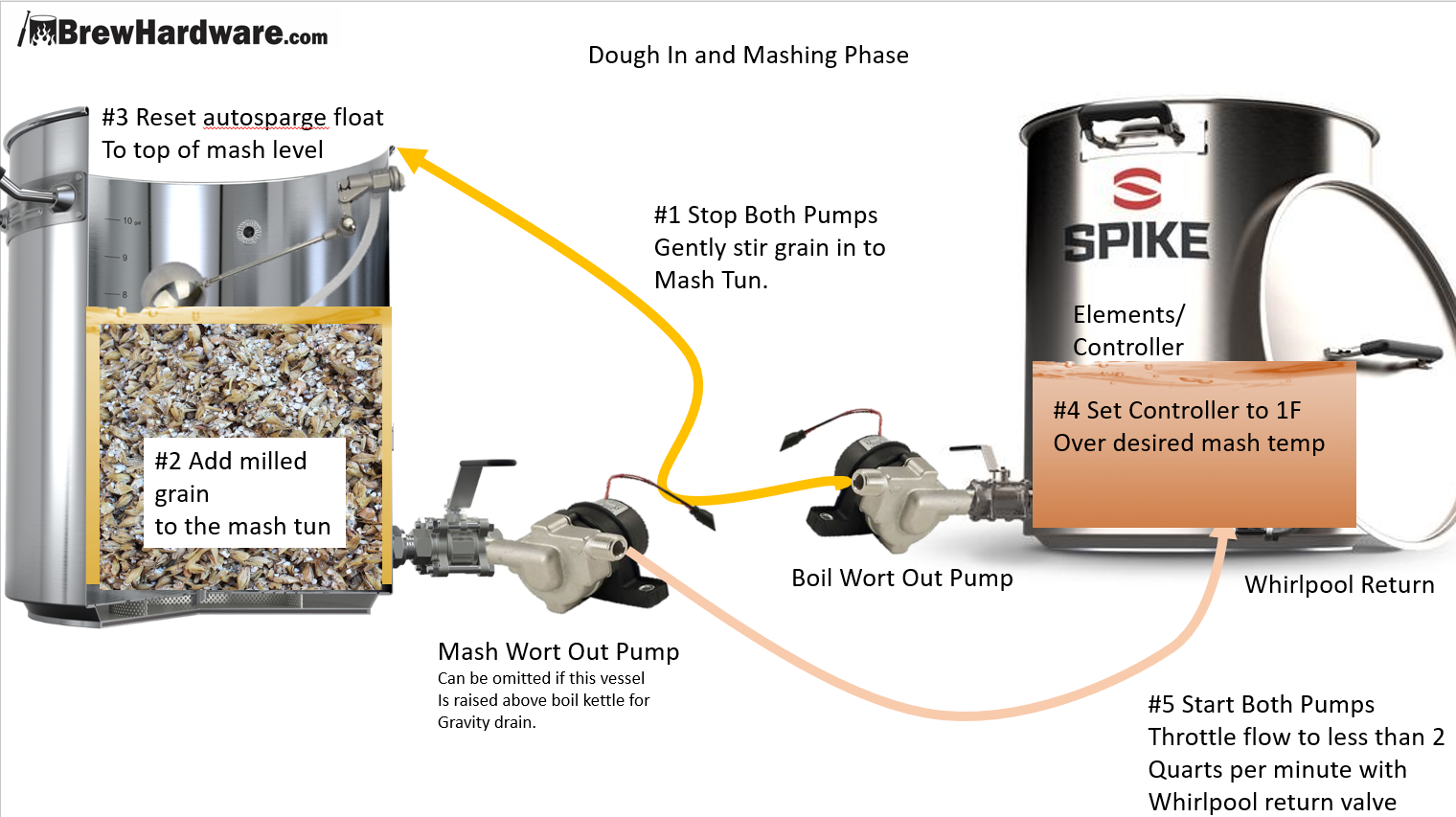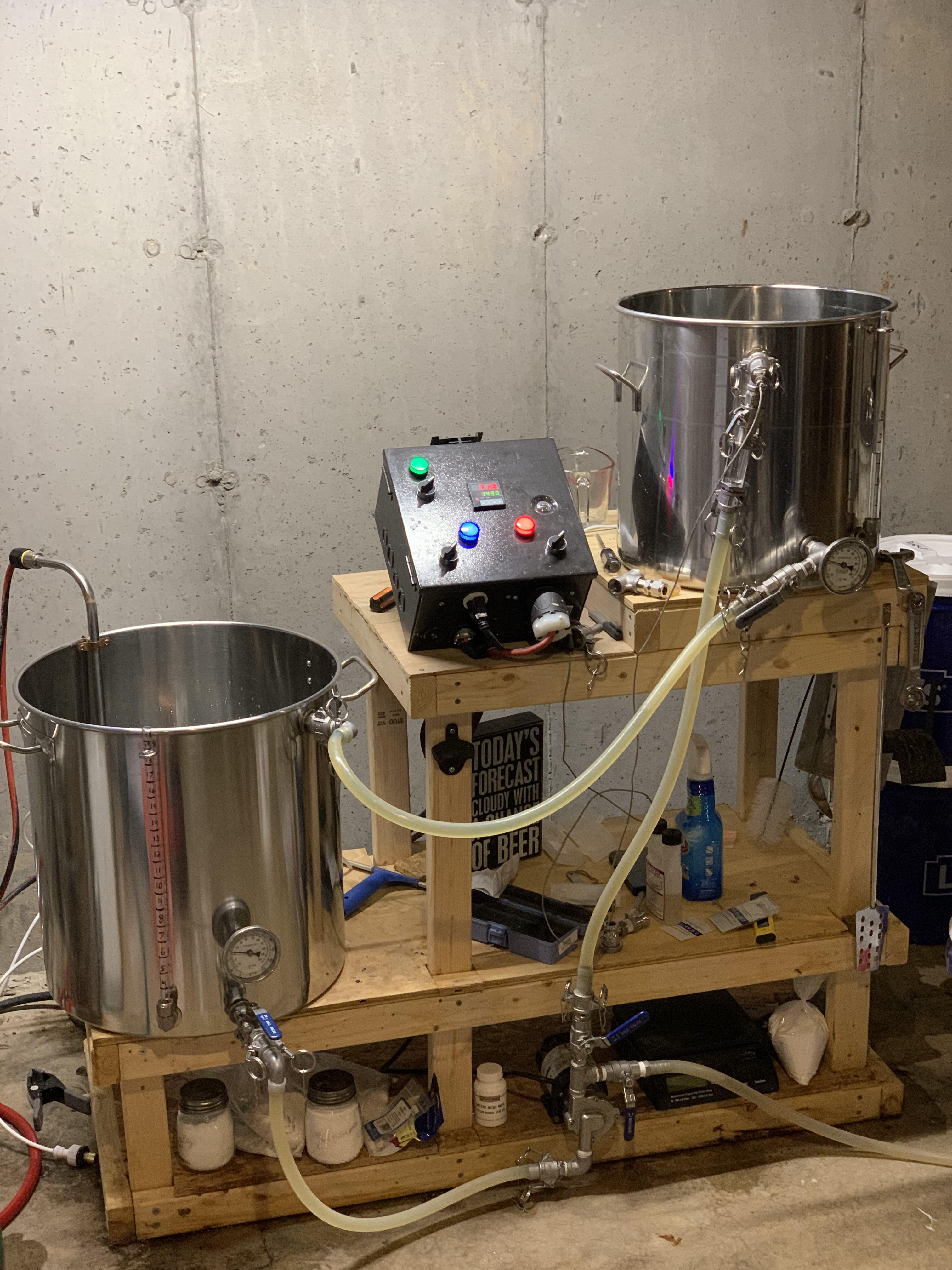astropixel
New Member
Hi All,
I'm new to all-grain brewing, but already caught the electric bug. I've got a a 3-vessel system consisting of a 10 gallon Megapot, a 15 gallon SS Brewtech pot, a 10G Igloo Mash Tun and 1 pump, curently using propane burners.
I settled on a 2-vessel K-RIMS setup with only the boil kettle heated, so I need advise on 2 issues.
Oh, I plan to brew 6-7 gallon batches and maybe a 10 gallon batch, who knows.
1) Which pot should I put the 5,500W heating element in and which pot gets the Blichmann Autosparge? I've got a 1.5" TC weldless bulkhead for the heating element and just need to position the hole for the Autosparge.
2) To accommodate a typical 5-7 gallon batch and occasional a 10 gallon batch, where should I mount the Autosparge? The 10G pot is 14" and the 15G kettle is ~15 5/8" in diameter. It looks like I'd need to use the 15G pot to use the 9" extended arm with the Autosparge, but I have no idea if that would be the right thing to do in my case.
Cheers
I'm new to all-grain brewing, but already caught the electric bug. I've got a a 3-vessel system consisting of a 10 gallon Megapot, a 15 gallon SS Brewtech pot, a 10G Igloo Mash Tun and 1 pump, curently using propane burners.
I settled on a 2-vessel K-RIMS setup with only the boil kettle heated, so I need advise on 2 issues.
Oh, I plan to brew 6-7 gallon batches and maybe a 10 gallon batch, who knows.
1) Which pot should I put the 5,500W heating element in and which pot gets the Blichmann Autosparge? I've got a 1.5" TC weldless bulkhead for the heating element and just need to position the hole for the Autosparge.
2) To accommodate a typical 5-7 gallon batch and occasional a 10 gallon batch, where should I mount the Autosparge? The 10G pot is 14" and the 15G kettle is ~15 5/8" in diameter. It looks like I'd need to use the 15G pot to use the 9" extended arm with the Autosparge, but I have no idea if that would be the right thing to do in my case.
Cheers






